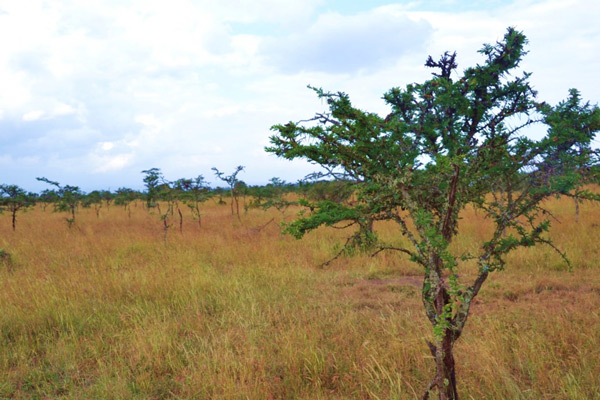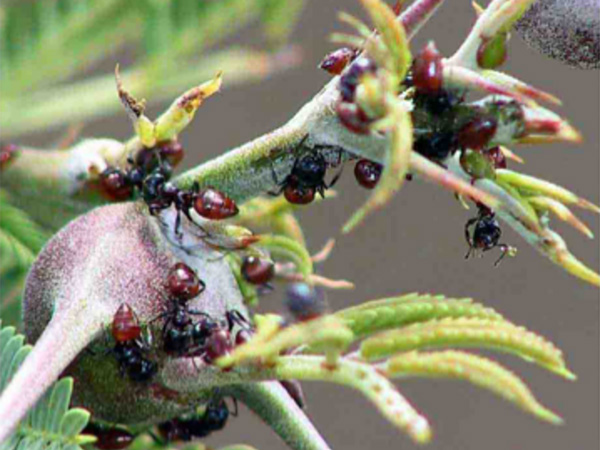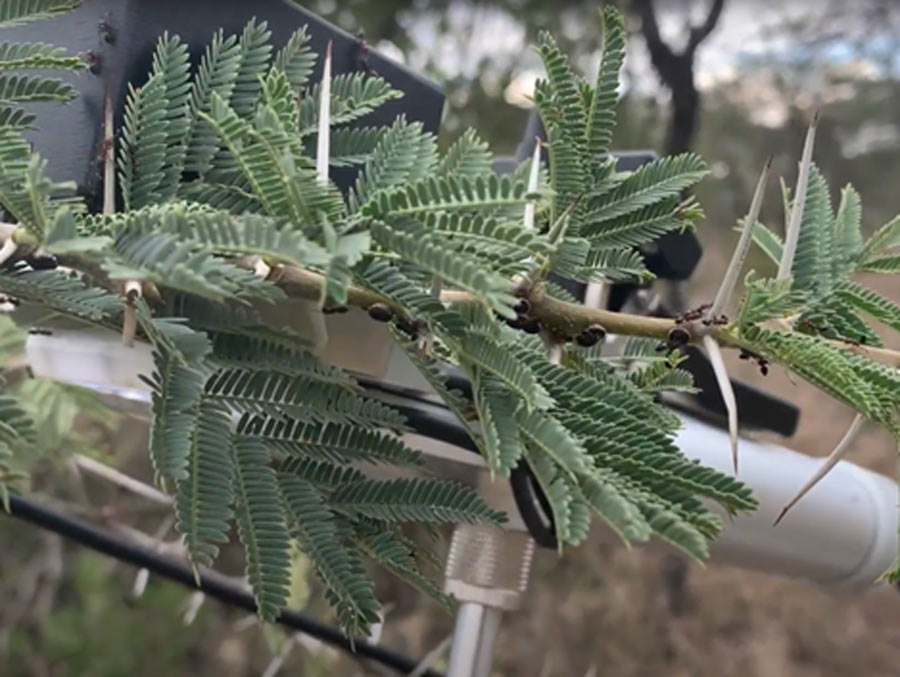Postdoctoral scholar Patrick Milligan recently published a paper that he started during his doctoral studies and is continuing during his National Science Foundation fellowship in Elizabeth Pringle’s ecosystem ecology lab. The research focuses on the ecological interactions that happen between four native ant species and their host acacia trees in Kenya.
“This work presents a new method set for studying the costs and benefits of insect-plant mutualism,” Milligan said. Milligan’s postdoctoral fellowship is only offered to researchers early in their careers and supports scientists who focus on research like Milligan’s.
The paper is one of the first studies to look at how trees acquire the carbon-based resources they have and how the species they interact with mediate those resources. According to Milligan, many past studies looking at the ecological relationships between Kenyan ants and acacia trees used measurements that looked at vegetative growth and reproduction.
“Those things work, but those are all outcomes from the resource pool that the tree has,” Milligan said.
“Think of it this way: the tree has a bucket of carbon it can spend on things, like growing branches or making seeds, but also 15 or 20 other things.” Milligan said all these other things the tree can spend its resources on are like holes in the bucket of resources. Those holes in the bucket range broadly, from basic maintenance to signaling between trees to the tree’s ability to respond to disturbances like infection or drought.
If researchers are better able to measure the carbon coming into the tree’s resources bucket, they can develop a better understanding of how the tree prioritizes certain functions and allocates its resources, and how that changes with each ant species that occupies it.
Research findings
The study took place in Kenya, where Milligan lived for three years, cumulatively. He said his field site is “a cornfield of acacias,” where the trees all have the same light conditions and receive the same precipitation.
“It’s a perfect petri dish to work in,” he said.
When the study began in 2013, two study collaborators, Todd Palmer (University of Florida) and John Lemboi (Mpala Research Centre, Kenya), removed ants from half of the study area trees. They sprayed an insecticide to remove the ants already present, then put “tanglefoot,” a sticky resin, on the tree to capture any ants that tried to return to the trees. The trees typically benefit from having their ant guests, as the ants defend the trees from large herbivores. Pringle said the ants serve as a “standing army” that bites any would-be plant-eaters until they give up and move on to another tree.

Five years later, Milligan and his colleagues measured the trees’ ability to fix, or consume, carbon, the tree’s leaf water status, and the sugars in the tree’s stem tissues. Having more methods to measure plant physiology allows the researchers to identify potentially confounding variables like water availability. The researchers compared the trees with no ants to trees with ants and found that the trees without ants were typically less healthy than the trees occupied by most of the other ants.
This is because of the unique relationships that have evolved between each of the ant species and the trees they occupy. For example, one of the ant species is particularly beneficial for trees during drought, while another supports younger tree growth. The relationships are complex, but the trees typically benefit from having one of the native species of ant living on them.
Milligan called this system a simple example of obligate mutualism, a type of relationship defined in ecology where two species need each other to thrive.
But there is a new addition to the ecosystem that is threatening its stability: an invasive ant species that is preying on the native ants. The invasive species will kill all the native ants and leave the tree empty. The invasive ant species spreads quickly across the landscape, leaving many empty trees in its wake which are subject to being knocked down and eaten by elephants.

“If the entire grove of trees is empty, the elephant is going to find it and just knock them all down and eat them,” Milligan said.
The thoroughness of the work, built through collaboration and years of meticulous monitoring, was praised by one of the reviewers, who said the manuscript “goes further than any paper [they were] aware of in documenting the physiological processes underlying the effects of plant-ants on fitness of their hosts,” according to Pringle.
Challenges of fieldwork and next steps
As Milligan continues his studies in Kenya, he hopes to study similar systems in a much closer place: Nevada. After Milligan gave a talk about the research findings, College of Agriculture, Biotechnology and Natural Resources Professor Hall Cushman approached Milligan about performing similar research in the sagebrush sea of Nevada, where harvester ants clear large spaces around the sagebrush plants.
“I know there are similar systems in other parts of the world… where scientists have speculated on what the carbon fixation or cycling consequences are of these interactions,” Milligan said. “But it’s hard to get the equipment and it’s hard to make it work in a lot of these environments, too.” Milligan was able to borrow some of the physiology equipment he used from study coauthor Tim Martin for his work in Kenya. However, he added that some of the equipment is finally becoming affordable, rugged and portable enough to bring to remote fieldwork sites. Some parts of the fieldwork continue to be a challenge.
“We still have a lot of wildlife that can make the work difficult,” Milligan said. The last time he visited the field, he heard a rumble behind him and thought it was a tractor, but when he looked, realized that the rumble came from a lioness. “But our study site is really arid and that is actually really conducive to doing plant physiology work, as long as the plants have access to belowground water,” he added in defense of his field site.
Milligan speculates that there are a lot of systems where similar events to those in Kenya are unfolding: a delicate relationship is being threatened by biodiversity loss and insect loss caused by humans, like the introduction of invasive species or climate change.
“We as humans need productive ecosystems for our planet to be livable,” he said. “Maintaining insect communities is really important for these complicated reasons.”















